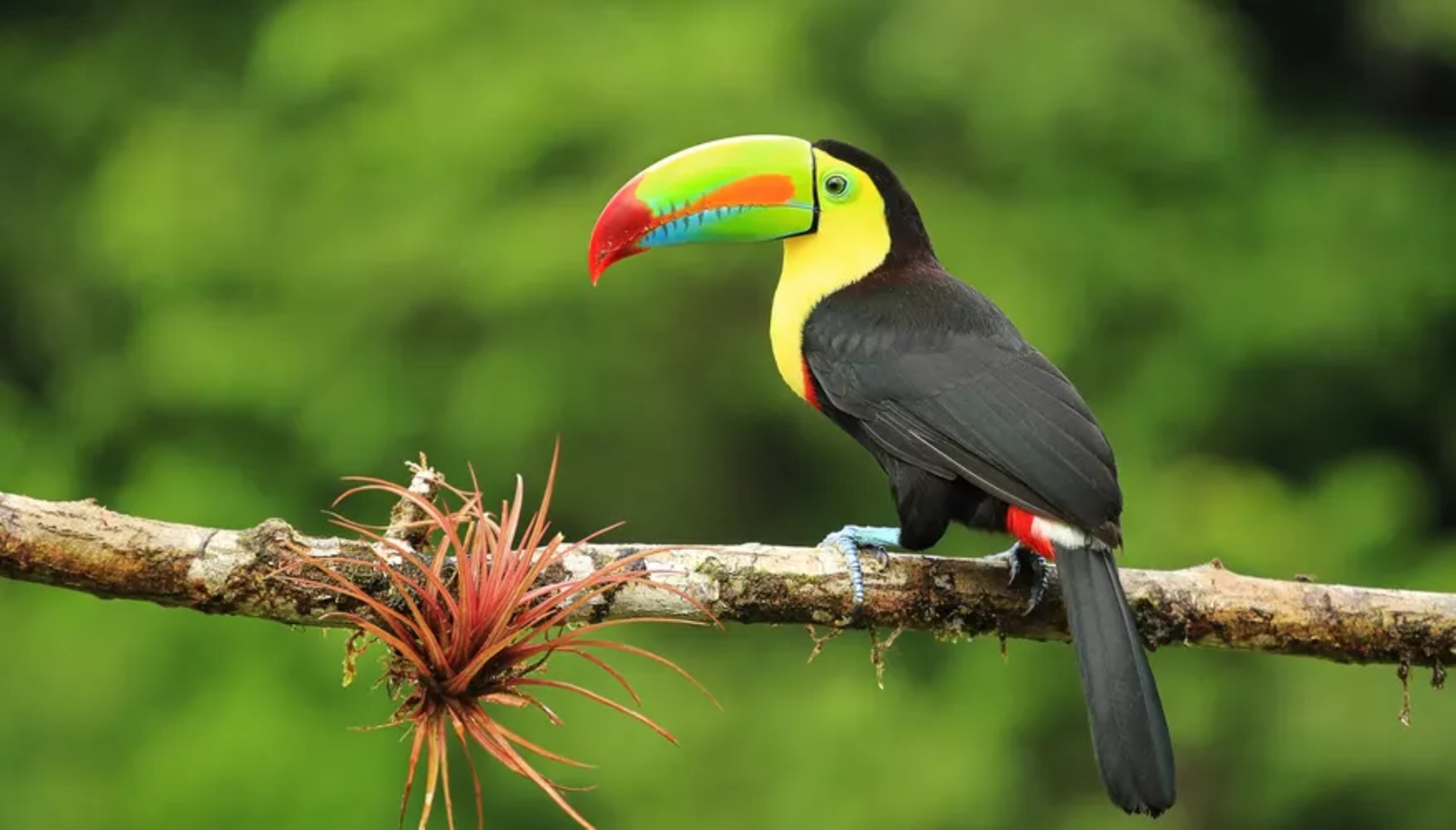
When it comes to understanding the intricate workings of ecosystems, one cannot overlook the role of biotic factors. Biotic factors refer to all living organisms within an ecosystem, including plants, animals, fungi, and microorganisms. These organisms interact with each other and their environment, creating a delicate balance that sustains life on our planet.
In this article, we will delve into the fascinating world of biotic factors and explore nine intriguing facts that highlight their importance and impact on ecosystems. Whether you’re a biology enthusiast or just curious about the wonders of nature, these facts are sure to captivate your attention and deepen your understanding of the interconnectedness of life forms on Earth.
Key Takeaways:
- Biotic factors, such as plants and animals, shape ecosystems and biodiversity, impacting the health and balance of our natural world.
- Human actions can disrupt biotic factors, but understanding and conserving these living organisms is crucial for the well-being of our planet.
Biotic factors refer to living organisms in an ecosystem.
Biotic factors are the living components of an environment, including plants, animals, fungi, and microorganisms. These organisms interact with each other and with the non-living factors in their surroundings, shaping their habitat and influencing the overall ecosystem.
Biotic factors play a crucial role in shaping biodiversity.
The presence of diverse biotic factors in an ecosystem contributes to its richness and variety of species. The interactions between different organisms, such as predator-prey relationships and symbiotic associations, influence the balance and stability of the ecosystem.
Biotic factors can influence the physical characteristics of an ecosystem.
Through their activities, biotic factors can modify the physical environment around them. For example, beavers construct dams that alter water flow and create new habitats for other organisms. Similarly, plant roots can stabilize soil and prevent erosion.
Biotic factors can have both positive and negative impacts on ecosystems.
While some organisms contribute to the well-being of their environment by pollinating plants or decomposing organic matter, others can become invasive species or cause harm through predation or disease transmission. It is essential to understand these interactions to maintain a balanced ecosystem.
Biotic factors are interdependent.
No organism exists in isolation; they depend on each other for resources, shelter, and other essential factors. The food web, which illustrates the flow of energy and nutrients through an ecosystem, demonstrates the interconnectedness of biotic factors.
Biotic factors can adapt and evolve over time.
Organisms can undergo genetic changes and adaptations to survive and thrive in their environment. This process of evolution ensures that biotic factors continue to exist and interact within their ecosystems, even amidst environmental changes.
Biotic factors contribute to ecosystem productivity.
Through processes like photosynthesis, biotic factors convert sunlight, water, and carbon dioxide into energy-rich compounds, supporting the growth and productivity of the ecosystem. They are the primary producers upon which other organisms, such as herbivores and carnivores, depend.
Biotic factors can serve as indicators of ecosystem health.
The presence or absence of certain organisms can provide insights into the overall health and functioning of an ecosystem. For instance, the decline of certain bird species may indicate environmental pollution or habitat degradation.
Human activities can significantly impact biotic factors.
As a dominant species, human actions like deforestation, pollution, and habitat destruction can disrupt ecosystems and pose threats to the survival of various biotic factors. Conservation efforts are crucial to protect and restore these important components of our natural world.
Conclusion
Exploring the world of biotic factors reveals a fascinating array of interactions and dependencies within ecosystems. From the intricate web of predator-prey relationships to the essential role of plants in sustaining life, these factors shape the very foundation of biological communities.
Understanding the impact of biotic factors is not only crucial for scientists and ecologists but also for individuals seeking a deeper appreciation for the natural world. By recognizing the intricate connections between living organisms, we can better comprehend the delicate balance that exists in our ecosystems.
So, the next time you observe a thriving forest or encounter a diverse range of wildlife, remember the remarkable influence of biotic factors. Each living organism plays a vital role in shaping its surroundings, creating a seamless tapestry of life on Earth.
FAQs
Q: What are biotic factors?
A: Biotic factors refer to all living organisms, including plants, animals, fungi, bacteria, and other microorganisms, and their interactions within an ecosystem.
Q: How do biotic factors influence an ecosystem?
A: Biotic factors have a significant impact on an ecosystem. They contribute to biodiversity, energy flow, and nutrient cycling. Additionally, interactions among biotic factors, such as predation and competition, shape the structure and dynamics of ecological communities.
Q: Can biotic factors change over time?
A: Yes, biotic factors can change over time. Environmental changes, such as climate fluctuations or human activities, can affect the distribution, abundance, and interactions of organisms within an ecosystem.
Q: Are humans considered as biotic factors?
A: Yes, humans are considered as biotic factors. As a species, we have a profound impact on ecosystems, often altering natural processes and habitats through activities such as agriculture, deforestation, and pollution.
Q: Are biotic factors only found in natural environments?
A: Biotic factors are present in both natural environments and artificial settings. Even in urban areas, there are living organisms such as plants, animals, and microorganisms that interact with each other and their surroundings.
Q: Are biotic factors essential for the survival of ecosystems?
A: Yes, biotic factors are vital for the survival of ecosystems. They provide the necessary components for energy flow, nutrient cycling, and the overall functioning of ecological processes.
Q: How can we protect biotic factors?
A: Protecting biotic factors requires conservation efforts focused on preserving habitats, reducing pollution, promoting sustainable practices, and raising awareness about the importance of biodiversity and ecosystem health.
Q: Are biotic factors only found on land?
A: No, biotic factors are not limited to land. They exist in various ecosystems, including aquatic environments such as oceans, lakes, rivers, and even the smallest bodies of water like ponds and puddles.
Q: Can biotic factors benefit humans?
A: Absolutely! Biotic factors provide numerous benefits to humans, including food, medicine, raw materials, and ecosystem services like pollination and soil fertility.
Biotic factors, the living components of ecosystems, play a vital role in maintaining the delicate balance of life on Earth. From the tiniest microorganisms to the largest mammals, each species contributes to the intricate web of interactions that shape our world. As you've learned about the fascinating aspects of biotic factors, why not expand your knowledge by exploring the equally important abiotic factors that influence ecosystems? Discover how non-living elements, such as temperature, light, and soil composition, work hand in hand with biotic factors to create the diverse and vibrant ecosystems we cherish.
Was this page helpful?
Our commitment to delivering trustworthy and engaging content is at the heart of what we do. Each fact on our site is contributed by real users like you, bringing a wealth of diverse insights and information. To ensure the highest standards of accuracy and reliability, our dedicated editors meticulously review each submission. This process guarantees that the facts we share are not only fascinating but also credible. Trust in our commitment to quality and authenticity as you explore and learn with us.


